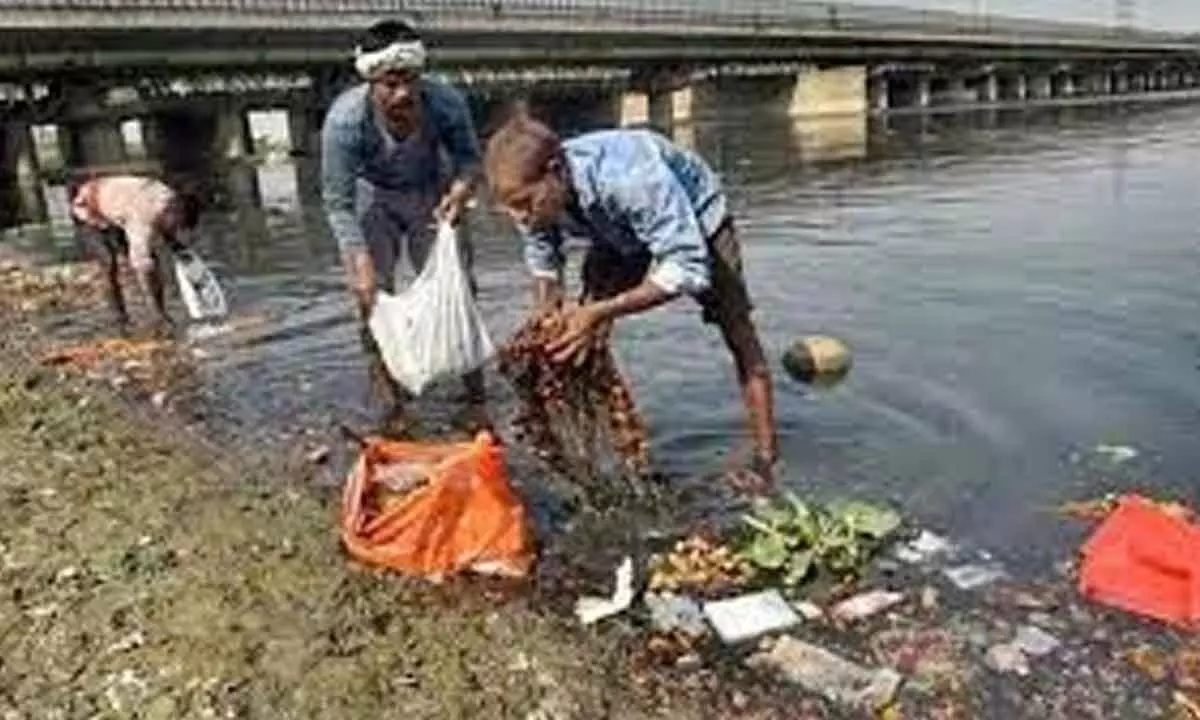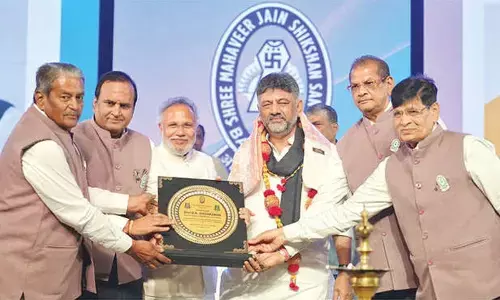Yamuna's pollution load has doubled since 2014: LG office

New Delhi: Pollution load of the Yamuna river in Delhi has doubled in the last eight years of the Arvind Kejriwal government, sources in the LG office said on Monday citing data from the Delhi Pollution Control Committee (DPCC).
The DPCC and the Delhi Jal Board (DJB) gave a presentation to Lieutenant Governor V K Saxena on pollution in the river on Saturday. The LG had called a meeting to take stock of the ground situation before the first meeting of a high-level committee set up by the National Green Tribunal on January 9 for the cleaning of the Yamuna. The green tribunal had requested the Delhi LG to head the committee.
The DPCC data showed that Biological Oxygen Demand (BOD) levels remained within permissible limits at Palla (2 milligram per litre), where the river enters Delhi, since 2014. BOD, an important parameter for assessing water quality, is the amount of oxygen required by aerobic microorganisms to decompose organic material present in a water body. BOD levels less than 3 milligram per litre (mg/l) is considered good.
At the Okhla Barrage, where the river leaves Delhi and enters Uttar Pradesh, the BOD levels rose from 32 milligram per litre in 2014 to a staggering 56 milligram per litre in 2023, an official source said, citing the DPCC data. The DPCC collects river water samples at Palla, Wazirabad, ISBT bridge, ITO bridge, Nizamuddin Bridge, Agra Canal at Okhla Barrage, Okhla Barrage and Asgarpur every month. The pollution load in the river has doubled in the last eight years of the Kejriwal government, the source said.
"The year-on-year rise in pollution has been consistent since 2014 with the only exception being 2019, when Haryana released more water into the Yamuna from the Hathnikund Barrage while undertaking the repair of the Yamuna Canal. The same resulted in pollutants getting washed downstream. "This deadly increase in pollution is mainly on the account of the AAP government absolutely failing to check pollution from the Najafgarh Drain despite persistent directions and monitoring of the Supreme Court and the National Green Tribunal," the source said.
The BOD levels at ISBT, just after the Najafgarh Drain falls into the Yamuna, rose from 26 milligram per litre in 2014 to 52 milligram per litre in 2017 and "remains at a high of 38 milligram per litre even today". The Najafgarh Drain accounts for 68.71 per cent of the wastewater being discharged into the Yamuna.
The Shahdara Drain -- the second biggest polluter --accounts for 10.90 per cent of the wastewater discharge. The cleaning of the two drains has "remained criminally unaddressed". The drains flowing into the Najafgarh Drain have not been trapped and the untreated sewage is being discharged into the drain and then into the Yamuna, the sources said.
They said that just nine of the 35 sewage treatment plants (STPs) in Delhi comply with the DPCC standards. According to DPCC norms, BOD and TSS (total soluble solids) in treated wastewater should be less than 10 milligram per litre. Delhi generates around 768 million gallons a day (MGD) of sewage which is treated at these 35 STPs having a cumulative treatment capacity of 530 MGD. However, these STPs function at just 69 per cent of their installed capacity and hence, effectively, only 365 MGD of sewage is treated everyday.

















